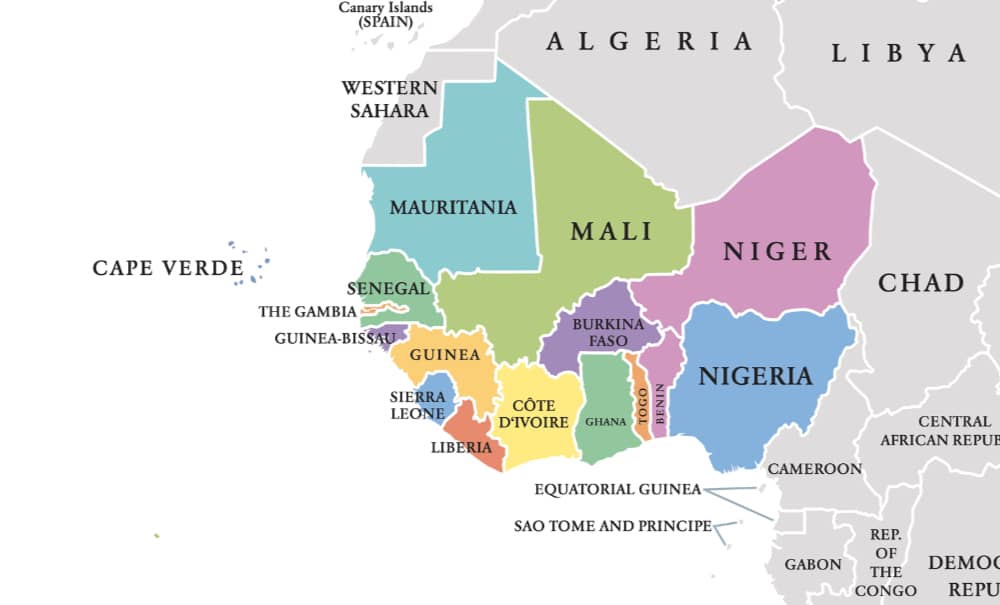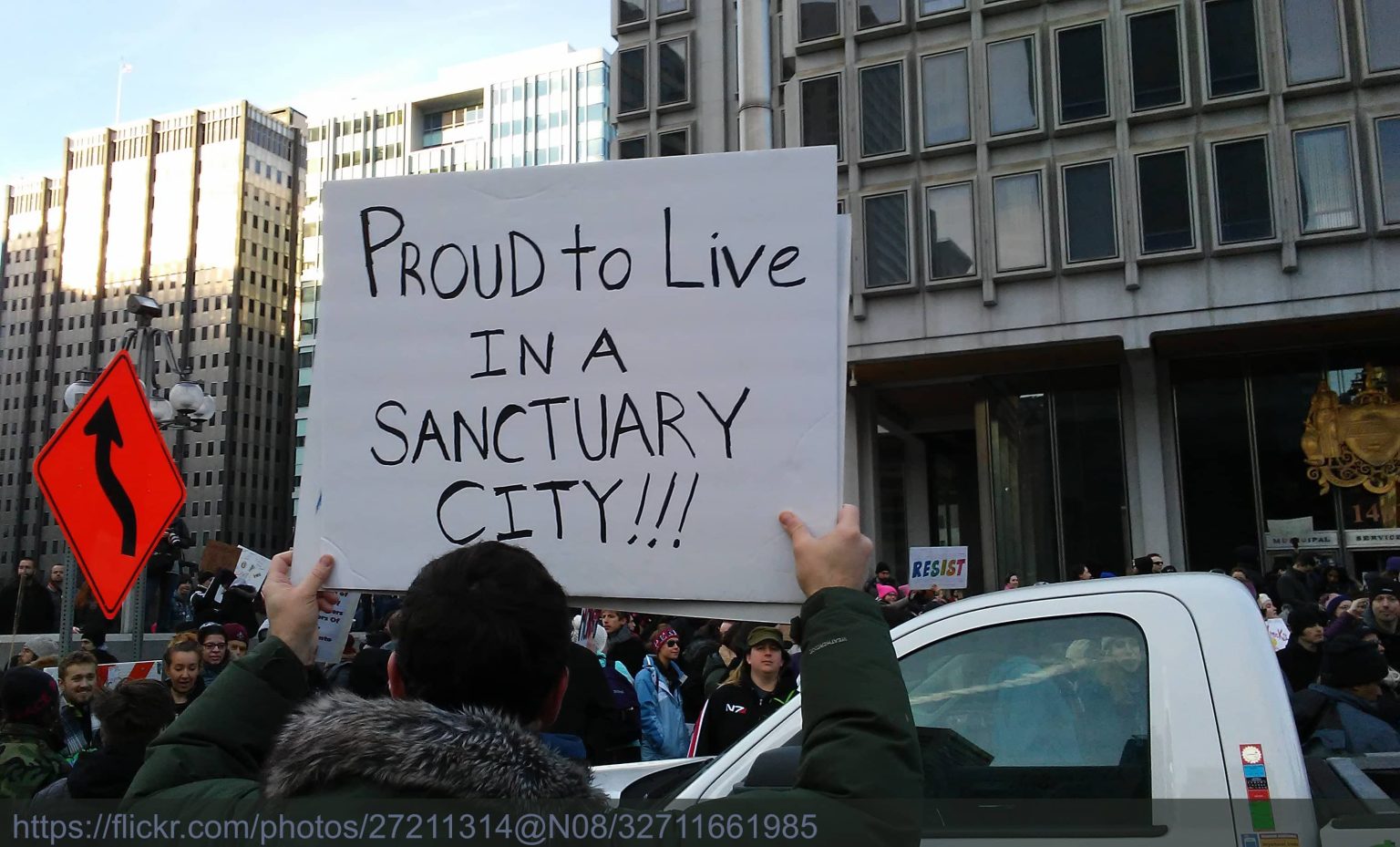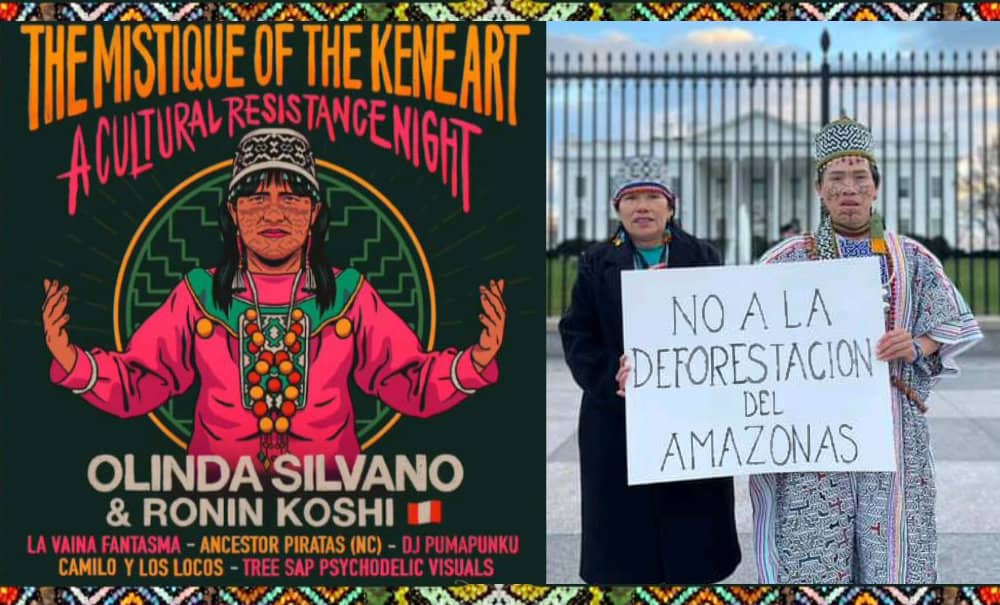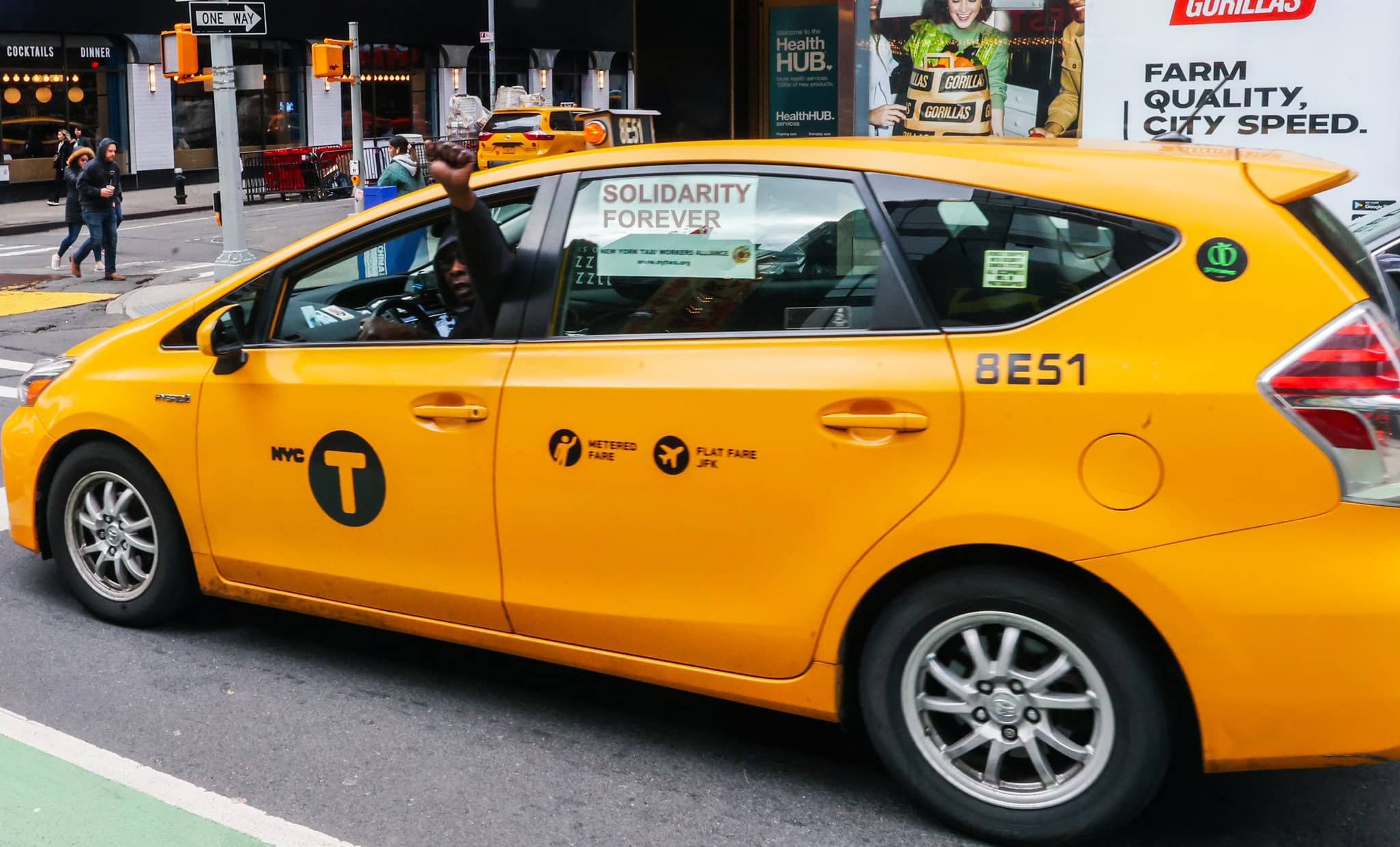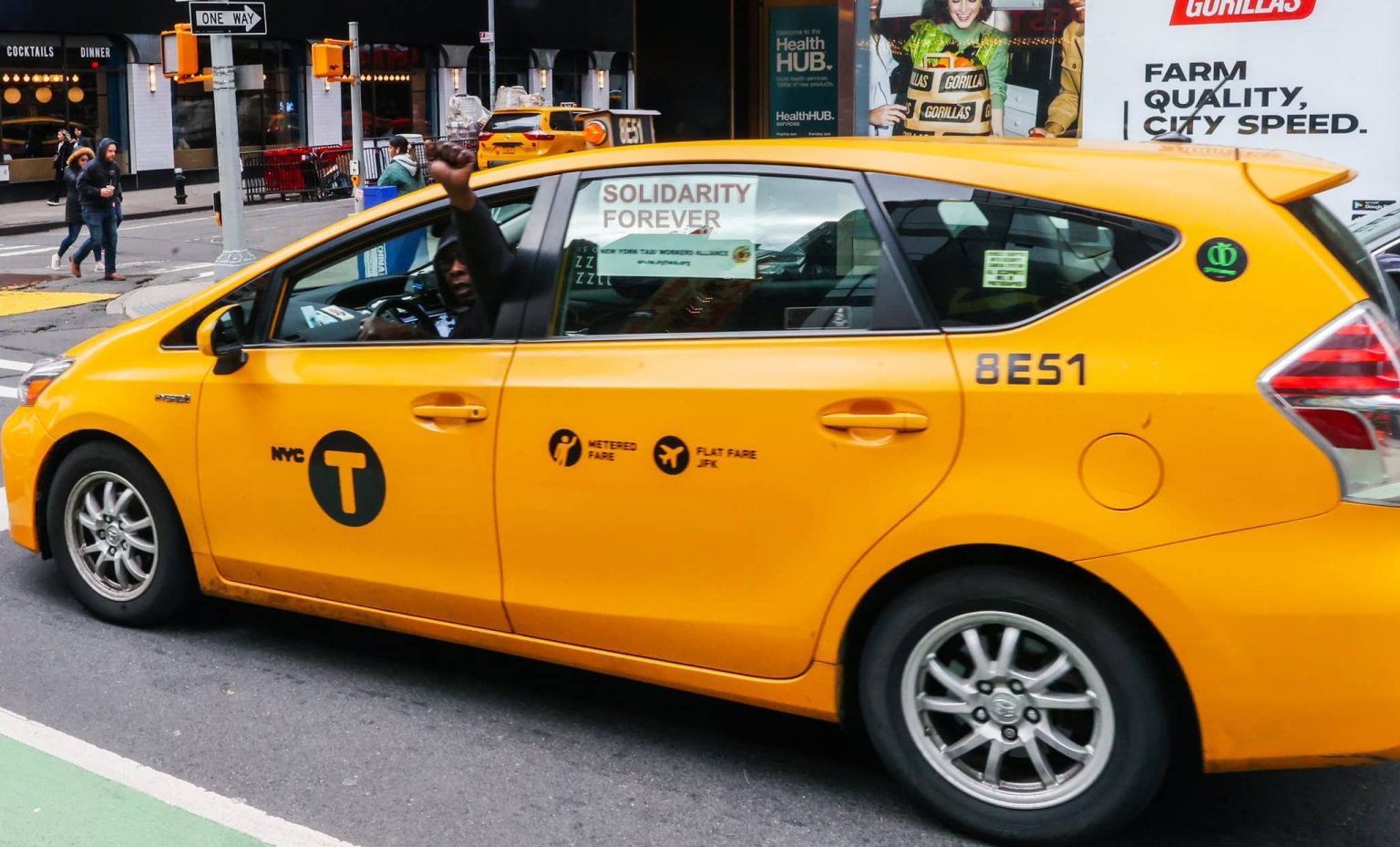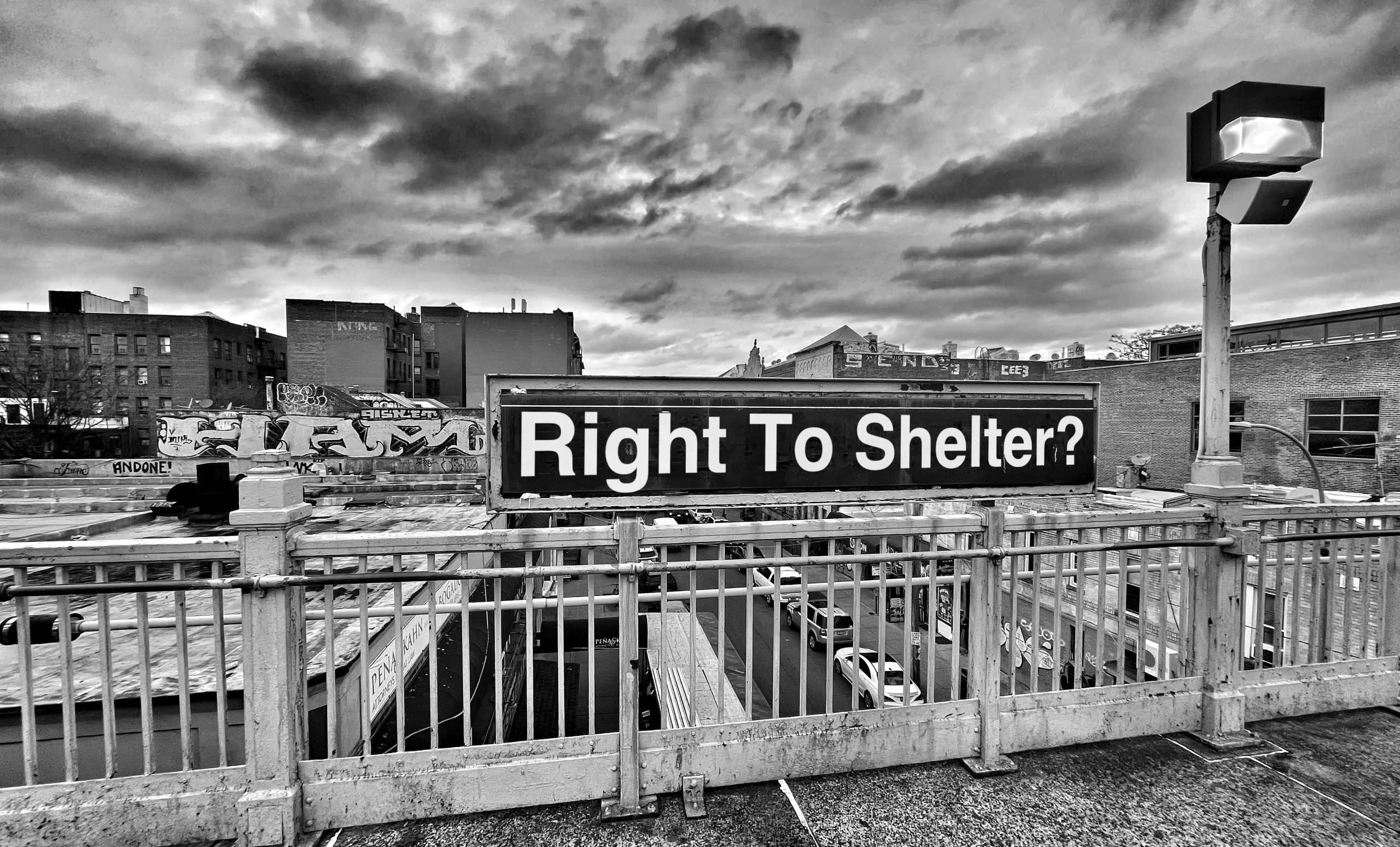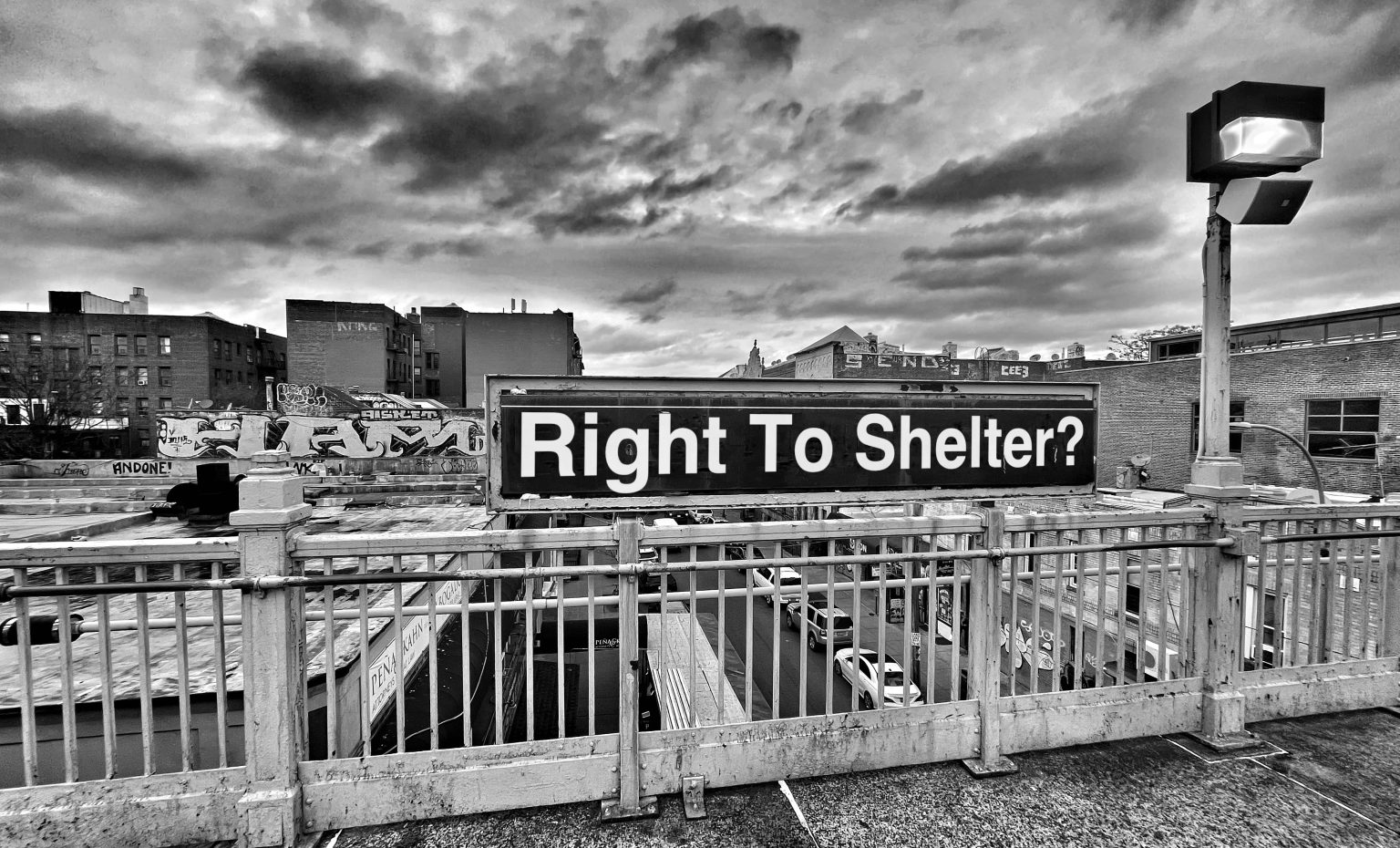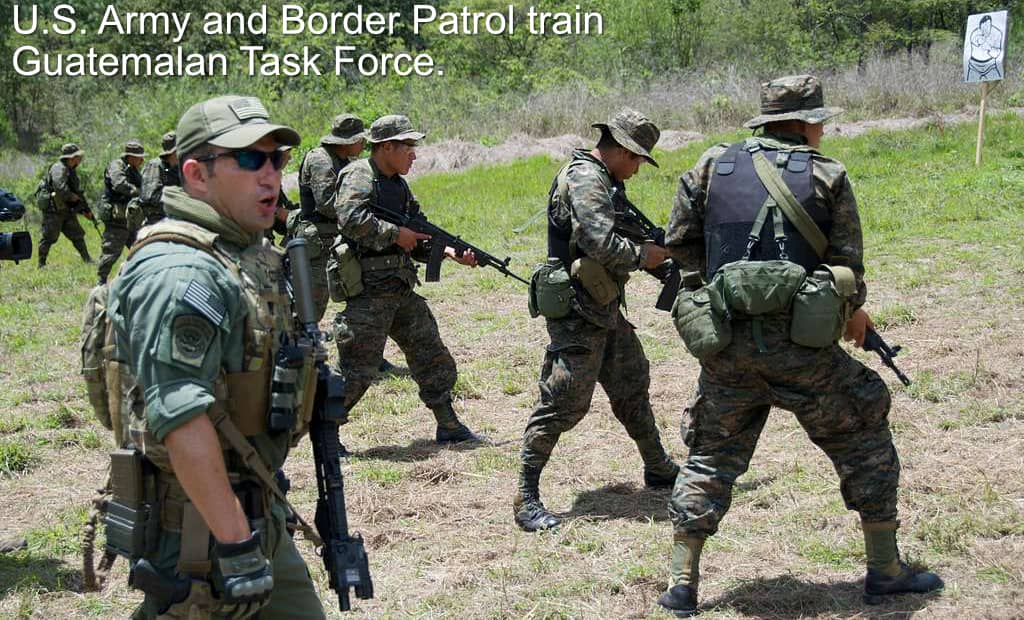
Dear friends,
We bring you news this week from the community frontlines of immigrant justice, highlighting the recent work of DRUM—a local group building power among low-wage South Asian and Indo-Caribbean New Yorkers. We then offer a frightening look at the publicized plans to dismantle and re-assemble the Department of Homeland Security into a militarized, anti-immigrant agency operating with impunity. The plans are part of the notorious Project 2025, a right-wing fever dream should the Republican party control the White House after the next election.
In these final days of Ramadan, as neighborhood communities look toward the crescent moon marking the end of this holy month of fasting, reflection, and prayer, we remember the Palestinians facing hunger and starvation in Gaza long after the Shawwal moon grows full.
Newsletter highlights:
- DRUM initiates community meetings with electeds
- Project 2025’s plans for immigrant injustice
1. DRUM Challenges Lawmakers
DRUM (Desis Rising Up and Moving) is known for its promotion of grassroots democracy. In February, instead of waiting for elected representatives to hold town meetings about legislation that DRUM supports, they arranged for multiple local community gatherings and invited the electeds to attend.
“For our community meetings, we wanted to invert the dynamic of us going to our representatives. We called on them to come and sit with the people of the districts they represent and hear directly from us about the issues we are organizing around.”—DRUM Facebook (March 15, 2024)
Four open meetings were held: two in Queens and one each in Brooklyn and the Bronx. These “were opportunities for [elected officials] to practice accountability and report on their actions that affect our lives,” DRUM says.
Top issues of concern included the housing crisis, workers’ rights, education, and the genocide in Gaza. The corresponding legislation currently in the State Senate are the Good Cause, the Unemployment Bridge Program, and the Not on Our Dime bills.
The Good Cause law would protect tenants from arbitrary eviction and hold rent increases to 3%, or 150% of the Consumer Price Index, whichever is higher, as long as tenants continue to pay rent. Landlords could still evict tenants for non-payment of rent or lease violations.
The Unemployment Bridge Program would establish a fund for replacing lost wages for workers not eligible for unemployment insurance because of immigration status or the type of work they do. This proposed law is based on the principles of the historic Excluded Workers Fund.
The Not on Our Dime! bill would end New York state support for Israeli settler activity by banning not-for-profit companies from supporting Israeli settlement activity that violates international law and the Geneva Conventions of 1949.
DRUM’s reportback states:
“For all electeds, we call on you to take the time to be in the communities that you were elected to serve, and to show up in meaningful ways.”
WHAT CAN WE DO?
- Subscribe to DRUM’s monthly newsletter, and if you are able, make a donation to support DRUM’s community organizing.
2. The Intimidating Mandate of Project 2025
“Project 2025 elucidates how the administration would halt legal immigration, centralize power in the federal government, decimate privacy protections, and risk American security and prosperity, all in pursuit of a political obsession with immigration.” —Cecilia Esterline, “Unveiling the far right’s plan to demolish immigration in a second Trump term” (Niskanen Center, Feb. 2024)
Project 2025’s 900-page Mandate for Leadership is a self-described conservative playbook to “guarantee implementation of the Day One agenda,” which Trump has, without regret, stated will be his day of dictatorship. As a guidebook to “deconstruct the Administrative State,” 35 pages of Project 2025’s Mandate focus on the Department of Homeland Security (DHS) and its immigration procedures. If implemented, these initiatives would effectively give more militarized Enforcement and Removal Operations agents the authority to conduct warrantless searches anywhere in the country, and, when directed by the Secretary, enforce regulations internationally. Project 2025 creates a blueprint for the vast expansion of unaccountable executive power. DHS would be run by the executive office and its political appointees who will take novel approaches to circumvent the Congressional confirmation process. They will create data analysis and communication channels to control the flow of all information to justify and promulgate their anti-immigration stance without any checks and balances.
A sample of Project 2025’s recommendations to dismantle DHS and its existing immigration system includes stopping funds for all NGOs that support immigration; budgeting more government money for the border wall and to increase security at Ports of Entry; prioritizing the immediate deportation of immigrants over citations to appear in immigration court; ending legal prohibitions on family separation and allowing the expanded use of tents for temporary ‘housing’ of migrants; repealing the unaccompanied minor rule and permitting children to be housed by DHS instead of Health and Human Services; raising the standard for credible fear claims and removing domestic violence or gang violence as grounds for asylum; expanding the use of Blackies warrants, which notoriously rely on profiling appearance and ethnicity, and allowing, with limited oversight, workplace raids and the arrest of immigrant workers; and reinstating the Denaturalization Department to remove US citizenship and deport people.
The reason given for these recommendations is that DHS has “suffered from the Left’s wokeness and weaponization against Americans whom the Left perceives as political opponents” (p. 135). The Mandate itself directly weaponizes all departments against immigrants, even the one agency people recognize as supporting people in dire need, the Federal Emergency Management Agency (FEMA) (p. 138). After first asserting that the disaster response agency is not lawful, the Mandate then demands that any organization receiving FEMA funds should prove it is a lawful actor by:
- Forcing them to detain immigrants.
- Granting DHS full access to DMV and voting records of any state receiving FEMA support.
- Requiring them to register with E-verify.
E-verify has been described by critics as an intrusive and expensive government surveillance of daily life that would create enormous privacy and security risks. The ACLU writes that “a mandatory E-Verify system—which forces everyone in the country to ask the government for permission to work—simply does not belong in fair immigration reform.”
Project 2025 is not looking to create a fair or better immigration system; that is a legislative role. The Mandate’s primary goal is to reorganize DHS so that Congress has little power over the way the Department runs, or who runs it. A second goal is to further militarize the department and to convert administrative positions into enforcement roles. It will transform what is the third-largest federal department into a 100,000-person armed force that the president can wield, globally, without Congressional oversight. Another priority is to remove the options for asylum claims, including eliminating claims based on credible fear. The only time the Mandate adds an option for immigration is when recommending that people with wealth be allowed to pay for expedited immigration procedures (p. 146).
Even if the recommendation is not adopted to deliver that department of 100,000 enforcers, the 2025 Mandate offers another option: combine Customs and Border Patrol (CBP) and Immigration and Customs Enforcement (ICE) into a single department, the Border Security and Immigration Agency, (BSIA) (p. 138). Given “the persistent need for and utilization of U.S. military personnel and resources to assist BSIA with increasing whole-of-government efforts” (p. 139), they go even further: the Office of Air and Marine (OAM) will share with BSIA its aviation assets across the globe, and in every state in the US. DHS would then have the option of using military/aviation equipment anywhere in the US or globally wherever it sees a threat. This militarized overreach was already tested in 2020 when CBP flew a drone outside of the 100-mile border enforcement zone to monitor a George Floyd protest in Minneapolis.
The 2025 Mandate also expands the role of the Secret Service Uniform Division which protects the physical White House grounds. Its jurisdiction would be expanded to cover all of Washington, DC, to counteract what is stated to be a “trend of progressive pro-crime policies” (p. 158). The ICE memoranda identifying sensitive zones where agents cannot go would be rescinded. By removing “self-imposed limitations on its nationwide jurisdiction,” ICE agents can pursue “the civil arrest, detention, and removal of immigration violators anywhere in the USA without warrant” (p. 142). This means any institution of learning, hospitals, places of religious worship, funerals, weddings, and public demonstrations, marches, or parades would become locations where federal agents can act unimpeded.
The majority of people whose lives are vulnerable to the dehumanizing escalation and expansion of immigration enforcement practices, militarized throughout the nation, cannot vote in the elections which can stop its implementation. If US voters are fine with electing politicians who will enact these changes, that could be used to limit their own freedoms, it is because they don’t expect these tactics will ever be used against them. They could be wrong.
WHAT CAN WE DO?
- Share and donate to accountable.us which uses its monitoring influence website to reveal how special interest groups influenced Project 2025.
- Sign the petitions of the Southern Borders Communities Coalition and share its awareness-raising work about Border Patrol powers.
- Read the full Mandate chapter to find other surprises, such as preventing the Cybersecurity and Infrastructure Security Agency (CISA) from stopping future election interference (p. 155) or removing the Secret Service from two-thirds of its work investigating electronic financial white-collar crimes (p. 157).
- Encourage people to read the works of MacArthur Fellow and historian Kelly Lyle Hernández who challenges the origins, ideology, and evolution of US incarceration and immigrant detention practices.
In solidarity and with collective care,
Jackson Heights Immigrant Solidarity Network (JHISN)
Follow @JHSolidarity on Facebook and Twitter and share this newsletter with friends, families, neighbors, networks, and colleagues so they can subscribe and receive news from JHISN.
